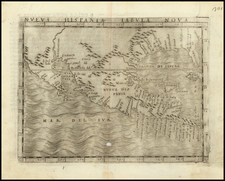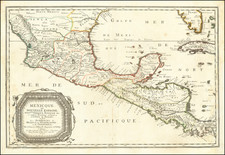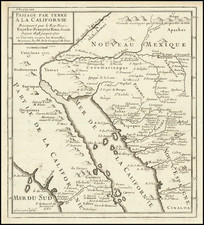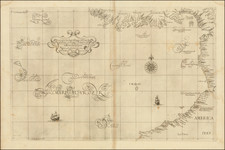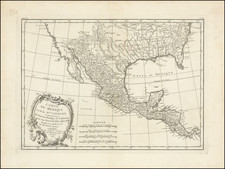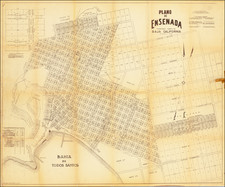Finely crafted map of the Yucatan Peninsula, which appeared in Augustus Petermann's Geographische Mittheilungen in 1879.
The original and much larger source map for Petermann's map of the Yucatan, published in Paris in 1878. is a significant monument of Mexican cartography. Described by Antochiw in "Historia Cartográfica de la Península de Yucatán," it was considered the finest map of Yucatán published up to that time, setting a benchmark for such maps for many years. This map was followed bu Petermann's map offered here in 1879.
Joachim Hubbe, one of the principal collaborators on the map, was a recognized German cartographer whose contributions to Mexican cartography are noted primarily through this map. Andres Aznar Perez, a Spanish explorer, and cartographer also played a vital role in the map's creation, demonstrating a unique ability to integrate various sources and local knowledge. C. Hermann Berendt, responsible for the revision and augmentation of Petermann's edition of the map, was an ethnographer, linguist, and archaeologist whose works were significant in Mesoamerican studies. Augustus Petermann, the founder of the influential geographical journal in which the map appeared, had a lasting impact on the field of geography.
The relationship between the Yucatán and Mexico during the second half of the 19th Century was marked by political turmoil and social upheaval. The Caste War of Yucatán, a revolt against the European-descended population, led to significant changes. Yucatán's complex relationship with Mexico saw it as an independent republic in 1850, rejoining Mexico in 1853, and continuing to wrestle with autonomy, governance, and indigenous rights. Economic growth spurred by henequen cultivation contrasted sharply with social inequalities and ongoing tensions.
August Heinrich Petermann (1822-1878) is a renowned German cartographer of the nineteenth century. Petermann studied cartography at the Geographical Art-School in Potsdam before traveling to Edinburgh to work with Dr. A. Keith Johnston on an English edition of Berghaus’ Physical Atlas. Two years later he moved to London, where he made maps and advised exploratory expeditions as they set off to explore the interior of Africa and the Arctic.
In 1854, Petermann returned to Germany to be Director of the Geographical Institute of Justus Perthes in Gotha. There, he was the editor of the Geographische Mittheilungen and Stieler’s Handatlas. The Royal Geographical Society of London awarded him their Gold Medal in 1860. He continued his interest in exploration in Germany, fundraising for the German Exploring Expeditions of 1868 and 1869-70, which sought an open Arctic sea. Tragically, he committed suicide in 1878.









